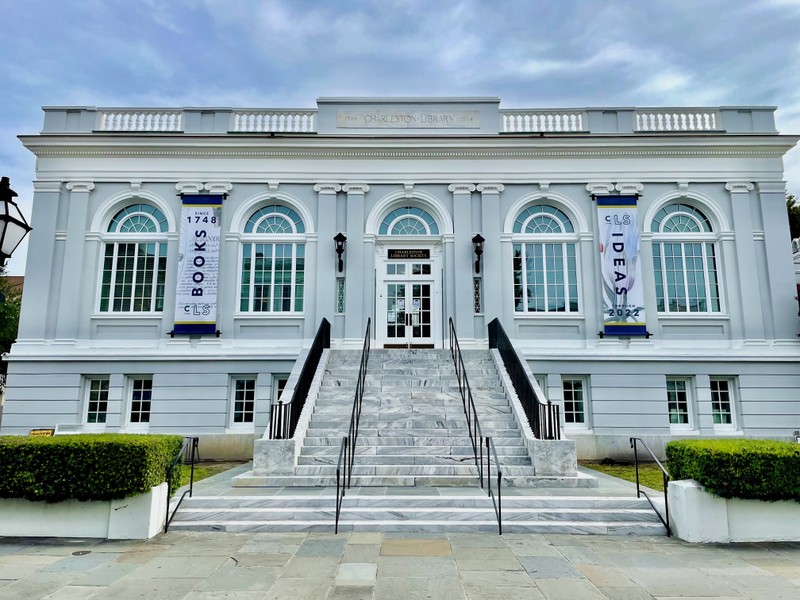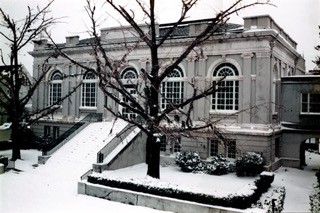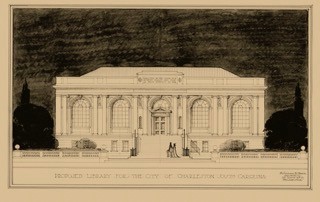Charleston Library Society
Introduction
Text-to-speech Audio
The Charleston Library Society is one of only 19 membership libraries in the United States, a group that includes the famous Boston Athenaeum, the New York Society Library, and the Redwood Library in Rhode Island. These subscription-based libraries existed prior to the establishment of public libraries, and many predate the Revolutionary War. The Library Society seeks to encourage lifelong learning, promote ideas and discussion, and serve local reading enthusiasts with its robust collections and welcoming environment. Sometimes called "Charleston's Living Room," the collections include everything from 15th century folios to modern day New York Times bestsellers.
Images
The Charleston Library Society at 164 King Street


Proposal of the current Library building

Backstory and Context
Text-to-speech Audio
The Charleston Library Society was founded on December 28, 1748 by nineteen local gentlemen with an interest in keeping up to date with the new books, pamphlets, and periodicals coming out of Enlightenment-era Great Britain. By 1778 the collection grew to 5,000 volumes, but unfortunately that year a fire destroyed nearly all of Library's contents. The Society began collecting again in 1792. While the collection floated between different locations for most of its history, including in personal homes, the County Courthouse, and a bank building, the Library Society acquired its first purpose-built library building in 1914. This building at 164 King Street still houses the Charleston Library Society today.
In 1862 the librarians of the Society packed up and sent much of the special collections from Charleston to Columbia for safe-keeping in the midst of the Civil War. The threat of German U-Boats off the coast during World War II prompted the Library Society to move their collections again, this time to a bank vault in Abbeville, SC. By then the archives includes what would be known as the Hinson Collection, a donation of 2,000 books and pamphlets donated by William Godber Hinson that served as the seed for future special collections at the Library.
During the Charleston Renaissance of the 1920s, a number of Charleston's literary and artistic elite would gather in the main reading room to work and socialize. Perhaps most famously, DuBose Heyward worked on his 1925 novel Porgy at the Library, which was later adapted into the 1935 George Gershwin opera Porgy and Bess.
Today the library continues to host members and researchers, as well as events and programs that elevate the intellectual and social community of the Lowcountry.
Sources
Bond, M. E.. The History of the Charleston Library Society, M.E. Bond Books. February 18th, 2019. Accessed August 5th, 2022. http://www.mebondbooks.com/2019/02/18/the-history-of-the-charleston-library-society/#:~:text=The%20Charleston%20Library%20Society%20was,Free%20School%20on%20Broad%20Street.
Charleston Library Society. Our History, Charleston Library Society. Accessed August 5th, 2022. https://charlestonlibrarysociety.org/our-history/.
